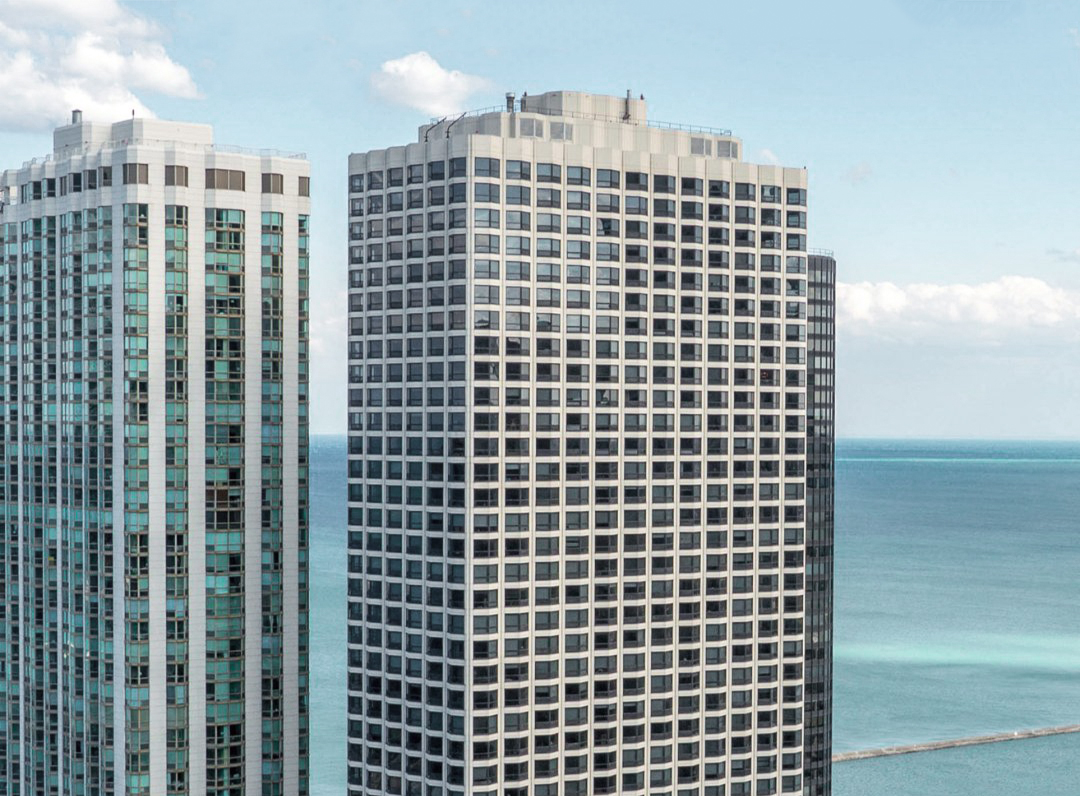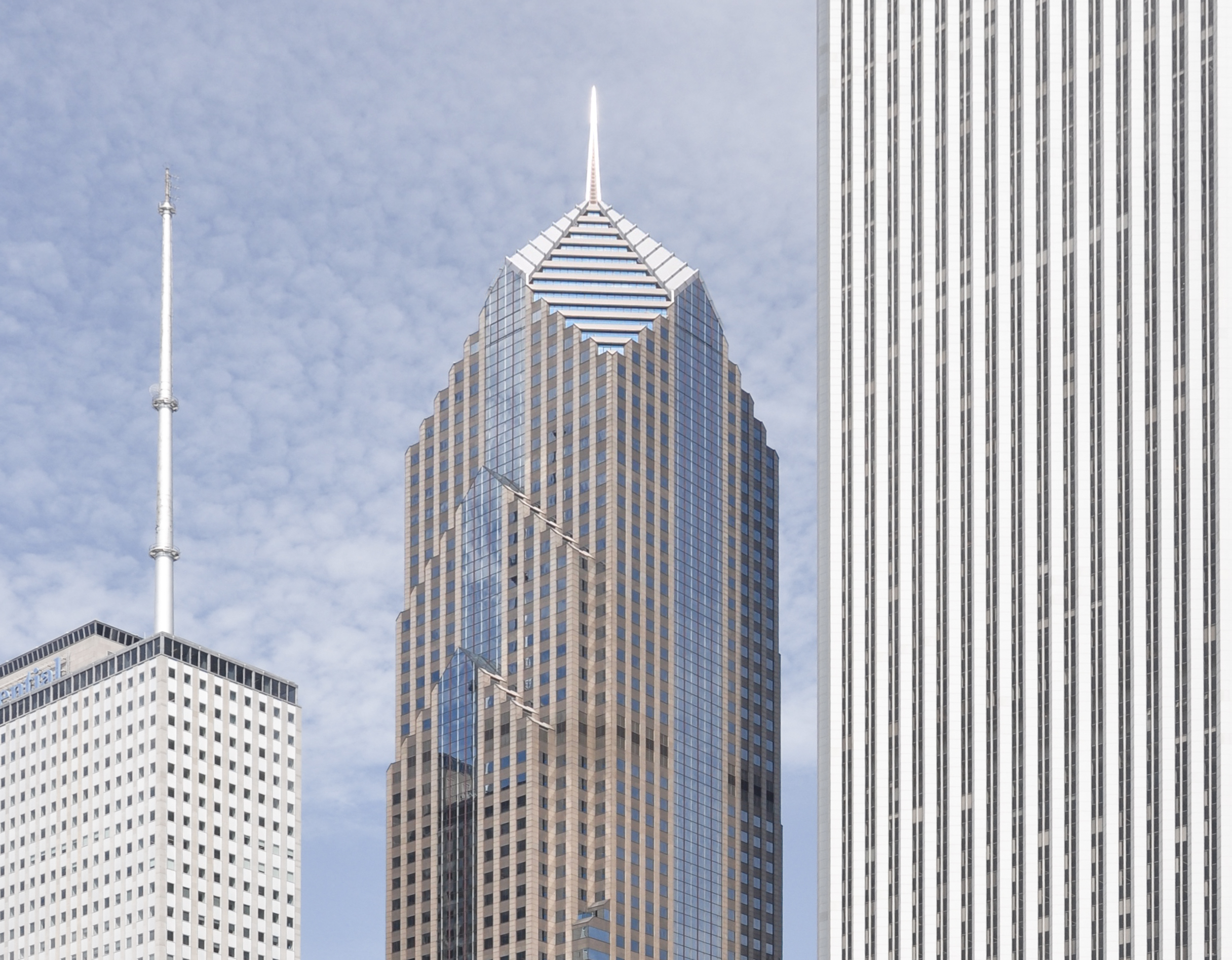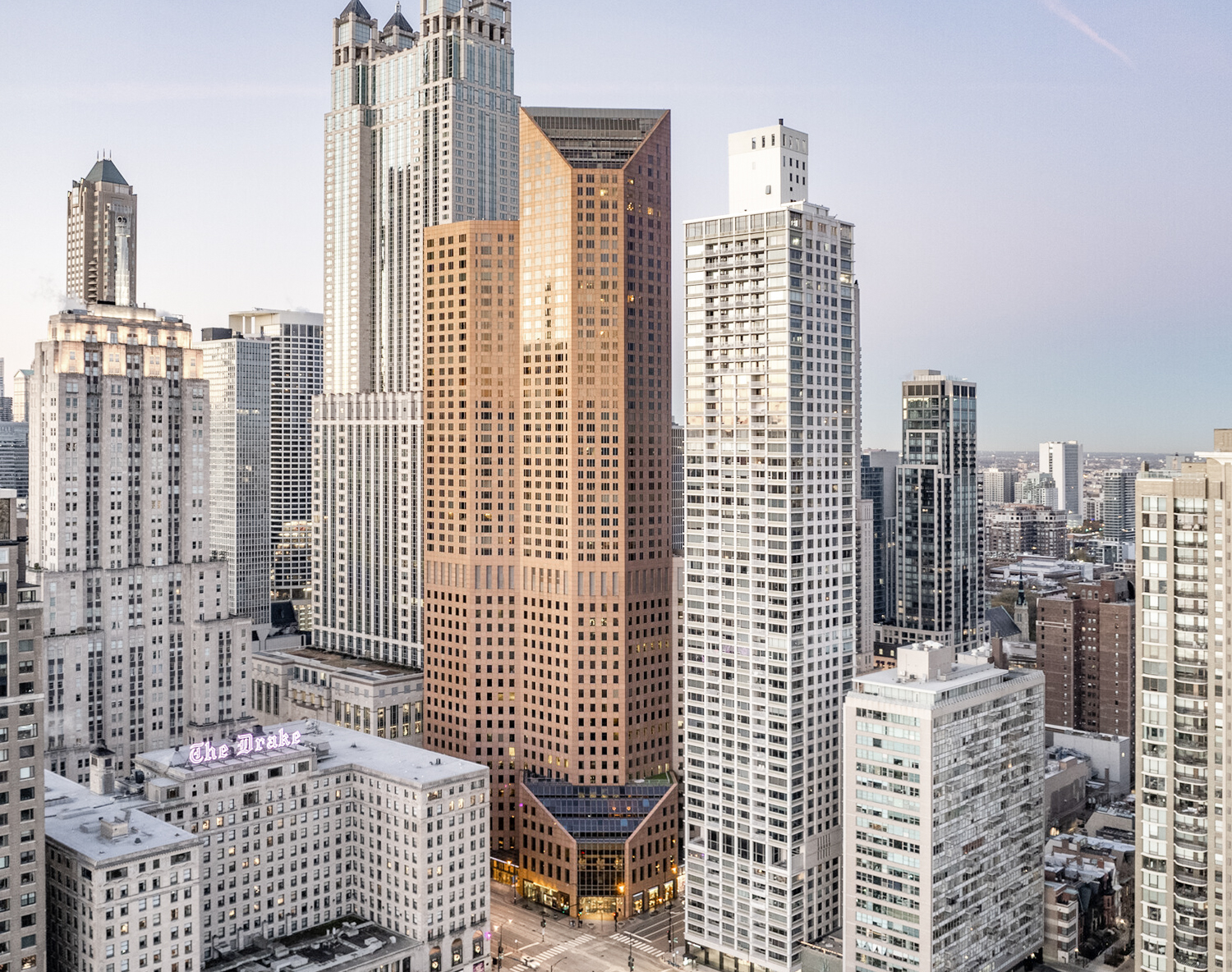The Boeing International Headquarters is a Postmodernist skyscraper designed by Perkins and Will, with Ralph Johnson as lead architect, and built between 1988 and 1990, for a reported $170 million dollars, in Chicago, IL.
Boeing International Headquarters is not the only name you might know this building by though. It is common for companies to want to attach their names to iconic buildings when they move in, or for the general public to come up with nicknames, and this one is no exception. The building has changed names several times over the years, and is also known as:
- Morton-Thiokol International Building between 1990 and 2001.
- Boeing Building.
- 100 North Riverside Plaza.
Its precise street address is 100 North Riverside Plaza, Chicago, IL. You can also find it on the map here.
The Boeing International Headquarters has received multiple architecture awards for its architectural design since 1990. The following is a list of such prizes and awards:
- Mosto Innovative Structure in 1990
- Special Award of Recognition, Architectural Concept and Desing in 1991
- Certificate of Merit Interior Architecture in 1991
- Distinguished Building Award. AIA in 1992
- National Honor Award. AIA in 1993






